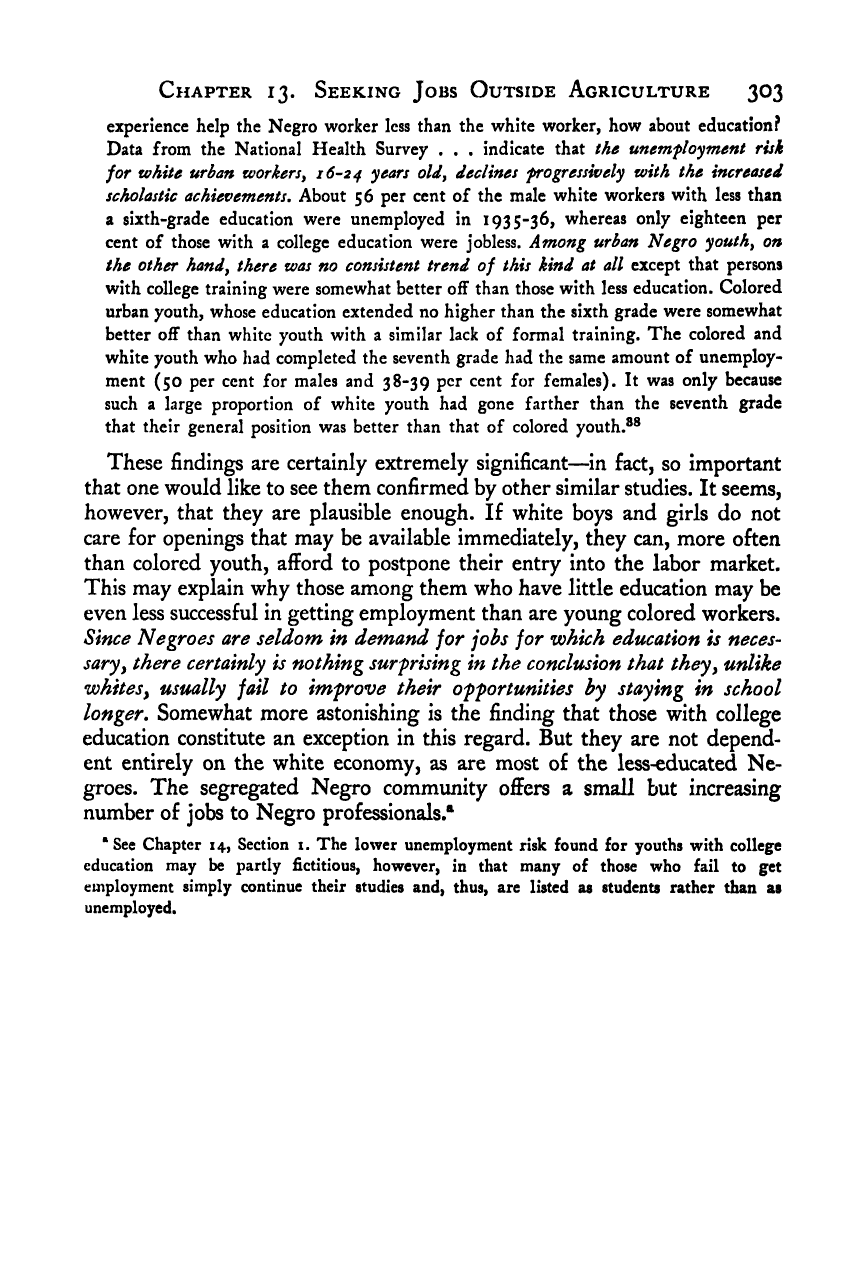Note: Gunnar Myrdal died in 1987, less than 70 years ago. Therefore, this work is protected by copyright, restricting your legal rights to reproduce it. However, you are welcome to view it on screen, as you do now. Read more about copyright.
Full resolution (TIFF) - On this page / på denna sida - IV. Economics - 13. Seeking Jobs Outside Agriculture - 9. Negro and White Unemployment

<< prev. page << föreg. sida << >> nästa sida >> next page >>
Below is the raw OCR text
from the above scanned image.
Do you see an error? Proofread the page now!
Här nedan syns maskintolkade texten från faksimilbilden ovan.
Ser du något fel? Korrekturläs sidan nu!
This page has never been proofread. / Denna sida har aldrig korrekturlästs.
Chapter 13. Seeking Jobs Outside Agriculture 303
experience help the Negro worker less than the white worker, how about education?
Data from the National Health Survey . . . indicate that the unemfloyment risk
for tvkite urban workers^ 16-24 years oldy declines progressively with the increased
scholastic achievements. About 56 per cent of the male white workers with less than
a sixth-grade education were unemployed in 1935-36, whereas only eighteen per
cent of those with a college education were jobless. Atnong urban Negro youthy on
the other handy there was no consistent trend of this kind at all except that persons
with college training were somewhat better off than those with less education. Colored
urban youth, whose education extended no higher than the sixth grade were somewhat
better off than white youth with a similar lack of formal training. The colored and
white youth who had completed the seventh grade had the same amount of unemploy-
ment (50 per cent for males and 38-39 per cent for females). It was only because
such a large proportion of white youth had gone farther than the seventh grade
that their general position was better than that of colored youth.®®
These findings are certainly extremely significant—in fact, so important
that one would like to see them confirmed by other similar studies. It seems,
however, that they are plausible enough. If white boys and girls do not
care for openings that may be available immediately, they can, more often
than colored youth, afford to postpone their entry into the labor market.
This may explain why those among them who have little education may be
even less successful in getting employment than are young colored workers.
Since Negroes are seldom in demand for jobs for which education is neces-
sary^ there certainly is nothing surprising in the conclusion that theyy unlike
whiteSy usually fail to improve their opportunities by staying in school
longer. Somewhat more astonishing is the finding that those with college
education constitute an exception in this regard. But they are not depend-
ent entirely on the white economy, as are most of the less-educated Ne-
groes. The segregated Negro community offers a small but increasing
number of jobs to Negro professionals*
•See Chapter 14, Section i. The lower unemployment risk found for youths with college
education may be partly fictitious, however, in that many of those who fail to get
employment simply continue their studies and, thus, are listed as students rather than as
unemployed.
<< prev. page << föreg. sida << >> nästa sida >> next page >>